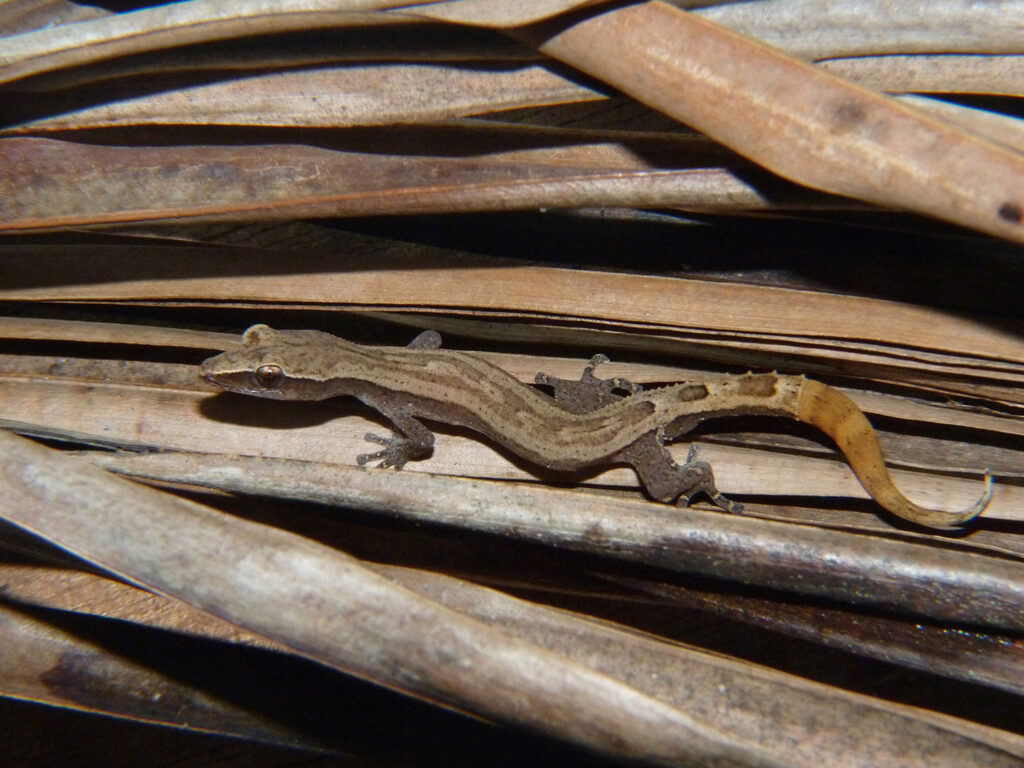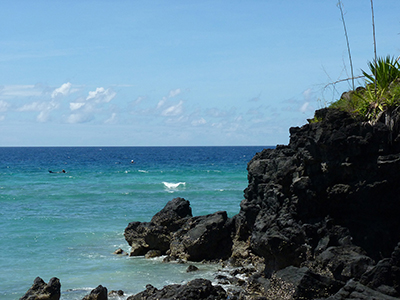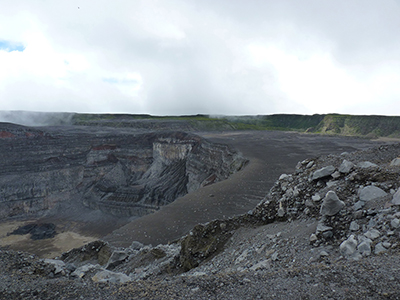Molecular Clock: Age of Volcanic Island Is Redefined Using Geckos
Bavarian State Collection for Zoology
Researchers from the Bavarian State Collection of Zoology, Munich, studied a gecko’s colonization of islands in the Western Indian Ocean. By applying molecular dating of a family tree of gecko species (“molecular clock”) they found that the volcanic island of Grand Comoro is likely much older than previously estimated based on geological data. They also found that the colonization of oceanic islands by terrestrial reptiles much more common in this region than previously thought, sometimes involving drifting across several thousand kilometers of open ocean.
Oceanic islands that have never had any connection with any other land-mass have been considered natural laboratories of evolutionary research since the times of Charles Darwin. Sometimes land-living animals drift across the open sea on fallen trees or other natural rafts and, with a big portion of luck, land on such islands. Some of the lucky ones start new population, which begin their independent evolution. The DNA, the genetic code of all organisms, continuously changes, which leads to the origin of new species at a very large time scale. This rate of change remains relatively constant in certain parts of a genome, which allows scientists to estimate the evolutionary ages of populations and species based on the number of such mutations. One such “molecular clock” was now established for Madagascar clawless geckos (genus Ebenavia), which are also found on some of the smaller islands in the Western Indian Ocean.
Geologists had previously estimated the ages of islands inhabited by the geckos to be between 2 and 15 million years. The researchers from Munich and their collaborators found that the geckos were accordingly younger than the specific islands they inhabited – the molecular dating confirmed the geological dating. But there was one exception: Based on geological data the estimated age of the island of Grand Comoro was not more than 500,000 years, while the molecular gecko clock showed an age of 3 to 5 million years.
Apparently, the geckos of Grand Comore already existed long before the origin of their island. How is this possible? “There are several possibilities”, explains Oliver Hawlitschek, leading author of the study: “The geckos might have lived on an older island that is now submerged – a part of the puzzle that would be lost to us.” A much more likely explanation is that the previous age estimates are not very accurate, because such geological dating always relies on rocks that are accessible to geologists. Grand Comoro is an active volcano of 2,360 meters, and most of its surface is covered in lava resulting from relatively recent eruptions. It is therefore possible that the oldest rocks are not accessible and the island appears much younger than it actually is.
This is a case in which the age estimation based on a molecular clock may be more reliable and provides an independent validation for geological data. Hawlitschek continues: “The global application of this method may reveal many more surprises. Several biological studies in recent years have raised doubts on the accuracy of the geological age estimates of some islands, but only now molecular clocks have become sufficiently advanced to provide clear evidence to examine some of the more dubious dates.”
The genetic analysis of the little lizards yields even more insights. Geckos from Mauritius Island are genetically identical to those from Tamatave, the largest port city of eastern Madagascar. Apparently, the reptiles reached Mauritius as stowaways on a ship.
Reptiles have travelled across the Indian Ocean remarkably often and over astonishing distances, long before human seafarers took to the oceans. The researchers have reviewed such cases in collaboration with the Spanish Center for Marine and Environmental Research (CMIMA). “We have evidence for 48 colonization events of oceanic islands by terrestrial reptiles across distances mostly between 100 to 1,000 km in the Western Indian Ocean alone”, says Frank Glaw from the Bavarian State Collection of Zoology. He continues: “They drift on the open ocean, completely dependent on winds and marine currents. Some species have travelled more than 5,000 kilometers and crossed almost the entire Indian Ocean!”
More information about the molecular clock: http://oliverhawlitschek.weebly.com/uploads/8/4/9/7/84974956/molekulare_uhr_de.png
Publications:
Hawlitschek, O., Toussaint, E. F. A., Gehring, P.-S., Ratsoavina, F. M., Cole, N., Crottini, A., Nopper, J., Lam, A. W., Vences, M., Glaw, F. (2016): Gecko phylogeography in the Western Indian Ocean region: the oldest clade of Ebenavia inunguis lives on the youngest island. Journal of Biogeography. doi: 10.1111/jbi.12912
Hawlitschek, O., Ramírez Garrido, S., Glaw F. (2016): How marine currents influenced the widespread natural overseas dispersal of reptiles in the Western Indian Ocean region. Journal of Biogeography. doi: 10.1111/jbi.12940
Contact:
Oliver Hawlitschek
Bavarian State Collection for Zoology (SNSB-ZSM)
Münchhausenstr. 21, 81247 Munich
Tel.: +49 (0)170 903 69 94
E-Mail: oliver.hawlitschek@gmx.de
Dr. Frank Glaw
Bavarian State Collection for Zoology (SNSB-ZSM)
Münchhausenstr. 21, 81247 Munich
Tel.: +49 (0)89 8107 114
E-Mail: frank.glaw@zsm.mwn.de

The Madagascar clawless gecko (genus Ebenavia) is small and not very conspicuous, but tells an interesting story. Photo: O. Hawlitschek 
Mount Karthala is Grand Comoro Island’s active volcano. Most oceanic islands, including Hawai’i, the Canary Islands, and Mauritius, are volcanic in nature. Photo: O. Hawlitschek 
Mount Karthala is Grand Comoro Island’s active volcano. Most oceanic islands, including Hawai’i, the Canary Islands, and Mauritius, are volcanic in nature. Photo: O. Hawlitschek

